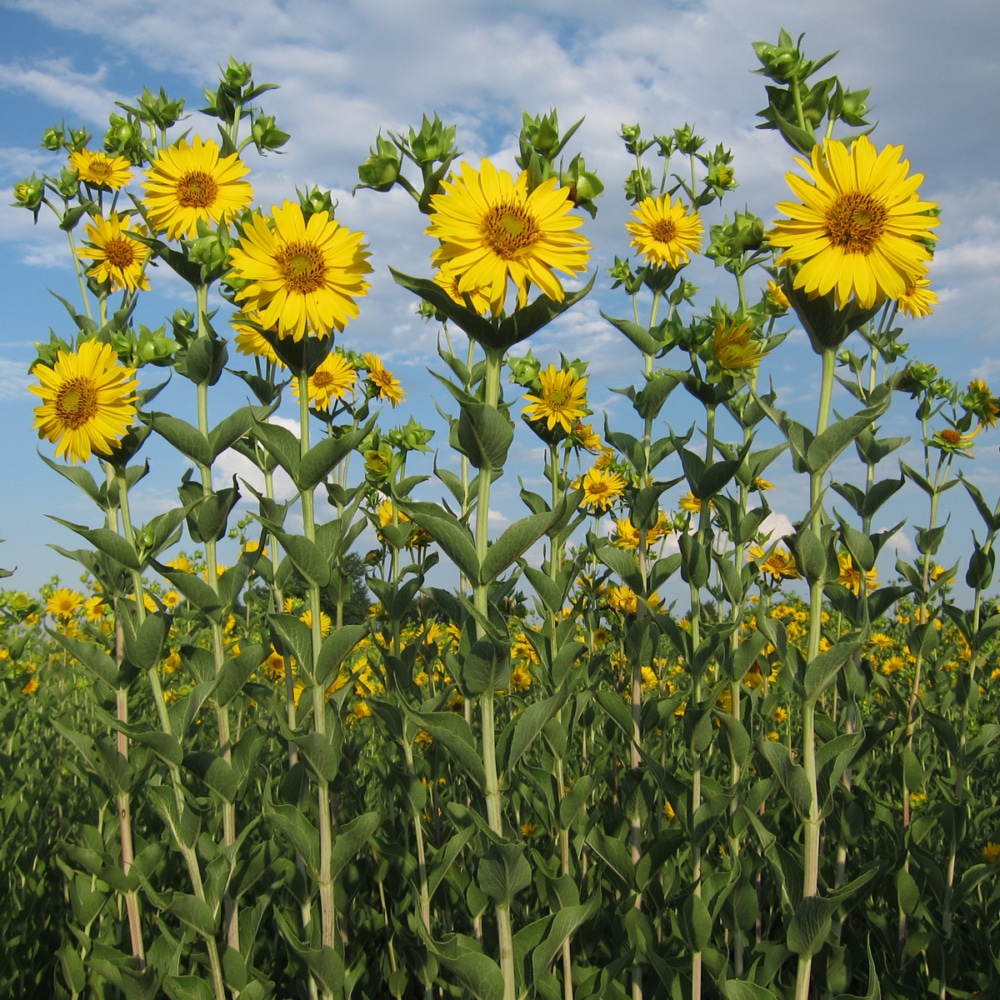Silphium is being domesticated as a new perennial biomass and oilseed crop. As a consequence of selection to improve yield, seedling´s growth and survival are expected to be affected indirectly. The phenotypic integration theory predicts that selection acts on the correlation structure among root and leaf traits. In order to assess the possibility of breeding simultaneously for early vigor and drought tolerance in Silphium integrifolium, two goals were proposed: 1) to assess trait coordination within and between plant modules in improved and wild accessions, and 2) to evaluate the effectiveness of leaf traits as selection criteria to develop vigorous and drought tolerant seedlings. Improved accessions were selected using three criteria: 1) seed yield (SEED); 2) leaf traits related to fast growth (FAST) or 3) slow growth (SLOW). FAST and SEED accessions accumulated biomass faster and had higher leaf area-root length ratio, than SLOW and wild. FAST´s traits were related to early aboveground vigor such as thinner leaves and higher specific leaf area, but roots were more superficial and their volume smaller, which is linked to low vigor and soil exploration. This has consequences for early outperformance of weeds and soil evaporation reduction, but may also imply tradeoffs, diminishing resistance to drought. We conclude that leaf traits cannot be used to select for vigorous and drought resistant seedlings, because the lack of coordination between leaves and roots. Nonetheless, phenotypic integration suggests that leaf traits can be used to select Silphium varieties for different target environments.


